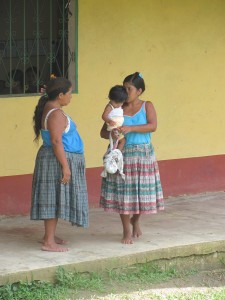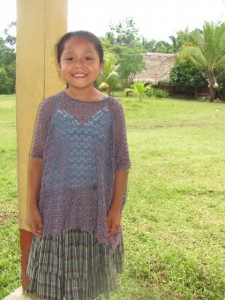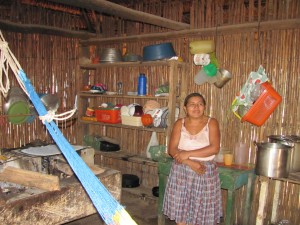An ancient culture looking for a place in the modern world:
Guatemala is famous for its indigenous culture and Mayan heritage. There are 23 different indigenous languages spoken in Guatemala, in addition to Spanish. Indigenous Mayan people make up about 40% of the population.
While people often think of Guatemala’s indigenous people as one homogeneous group, each indigenous group in Guatemala speaks its own unique dialect and has unique customs and traditions – which can be very different from each other.
Each group also has a unique style of dress, which identifies their heritage. In modern times, women are usually the ones dressed “typically”, while men do not dress in the native style.
Above left: Two Mayan Q’eqchi’ women wearing typical clothing. Right: Schoolgirl in more formal typical clothing.
The Q’eqchi’ – pronounced (Kek-chee) are the third largest indigenous group and Guatemala and make up about 6.3% of the total population.
Their population is centered around the city of Cobán, in the state of Alta Verapaz, as well as in the states of Petén and Izabal (where we work).
Indigenous Mayans in Guatemala are often the most poor and neglected of the population. This is the case for the Q’eqchi’ of the Rio Dulce.
They live in small villages scattered throughout the forest, along the Rio Dulce and its tributaries. They generally live in small huts with dirt floors, made from cane and palm leaves from the jungle. Many do not have electricity or clean water.
Above: Mayan Q’eqchi’ woman inside her home.
Men mainly make a living as fishermen – fishing from dugout canoes, called “cayucos”, by working as low-paid laborers on nearby plantations and ranches, or by finding odd jobs around the area.
Most villagers are Catholic or Protestant evangelical Christians.
The Q’eqchi’ are poor, but enjoy aspects of their lives and value much of what they have. They deeply value community, and few decisions are made without the approval of the village community. They cherish living close to nature and the tranquility it provides. Most prefer to speak in their native language.
While the Q’eqchi’ villagers still practice some native customs, they also have a modern outlook on life – and wish for much of the same things as a typical person. They want to be a part of the modern world, but without having to give up much of what they hold dear – such as community, closeness to nature, and tranquility.
One tradition of the Q’eqchi’ people is the use of the marimba. Marimbas are made by hand carving wood from the forest and tuning the pieces for each note. Below, some village men pratice playing the marimba one night.




